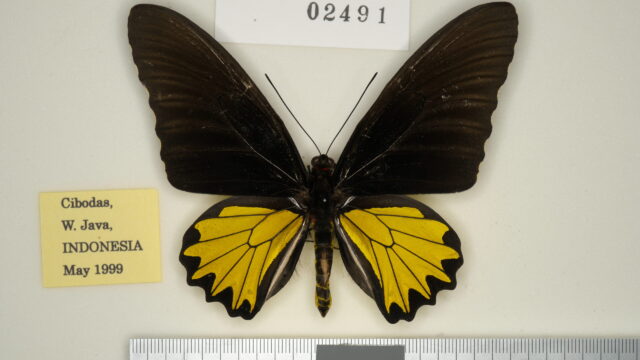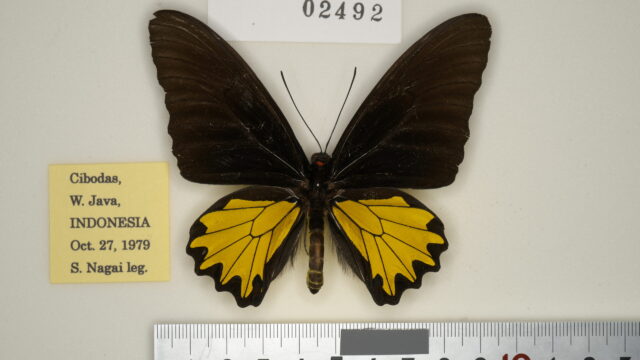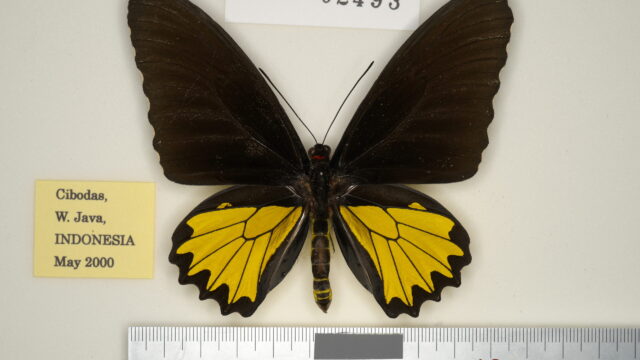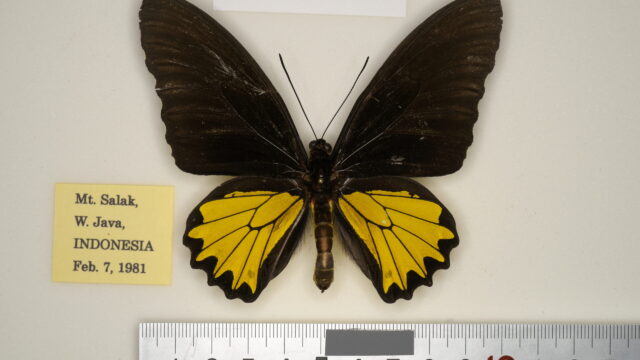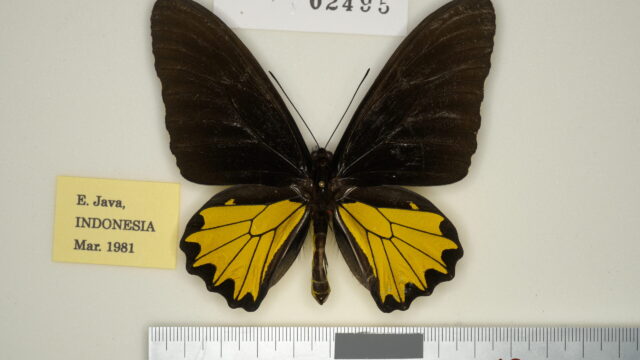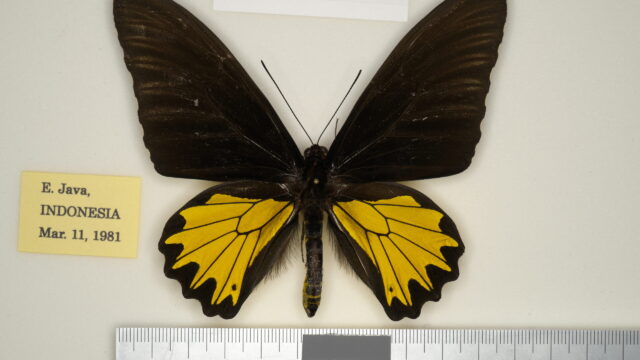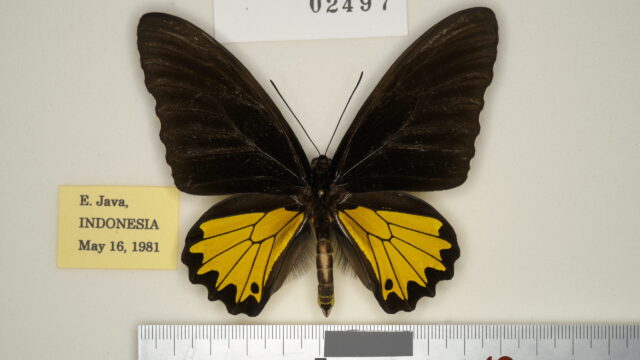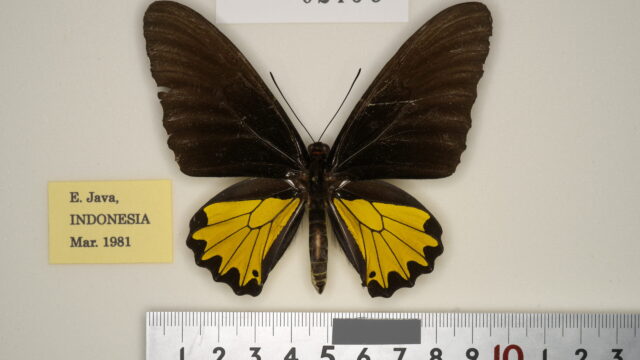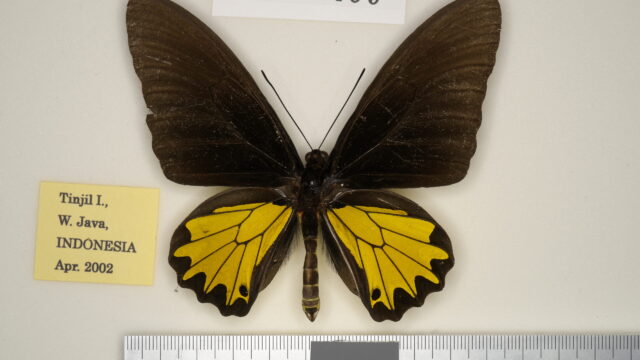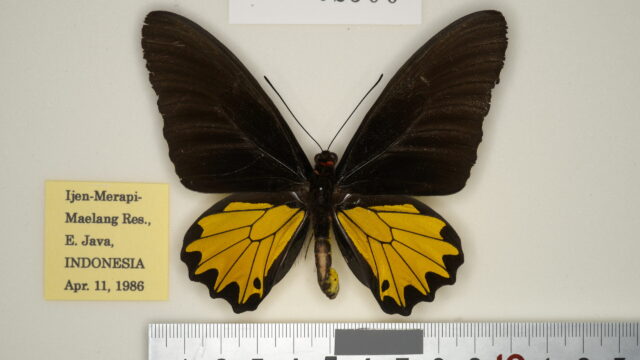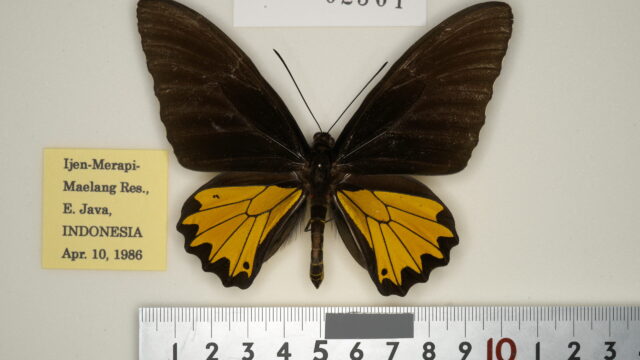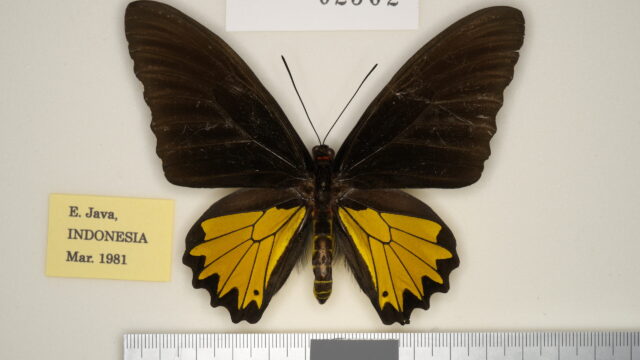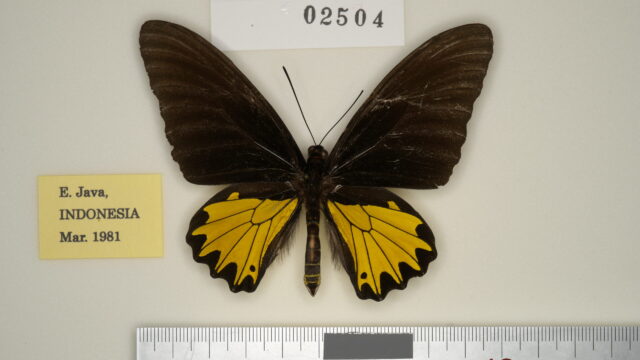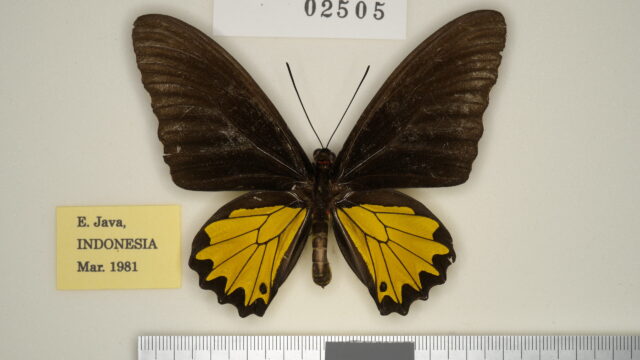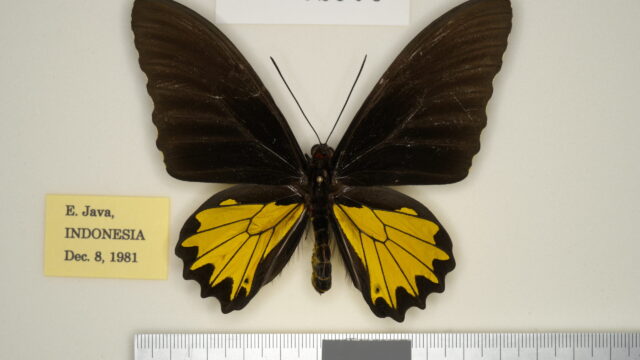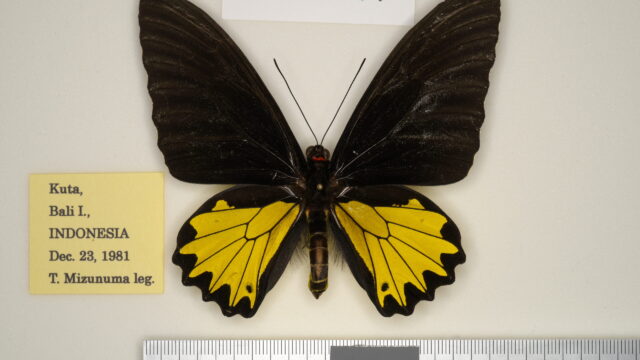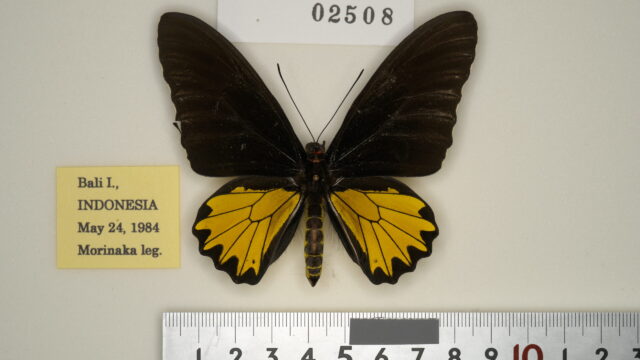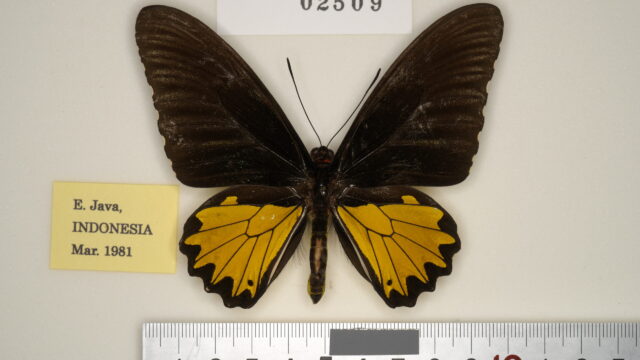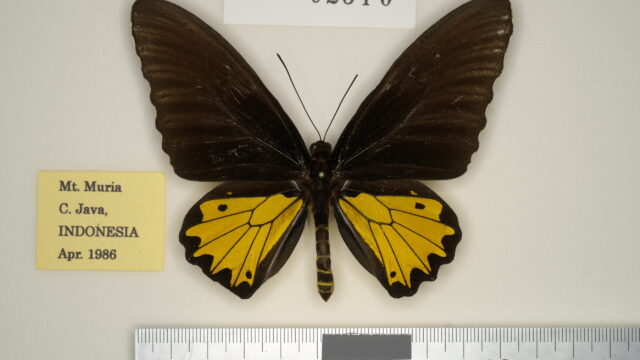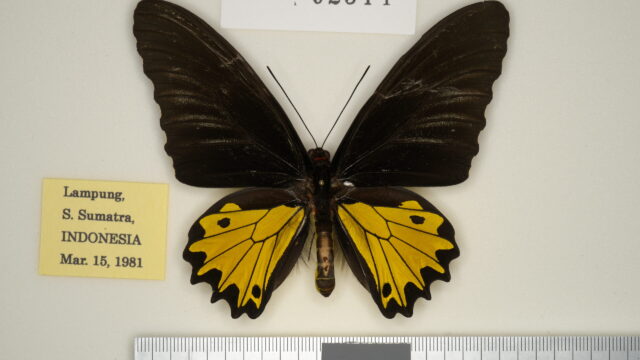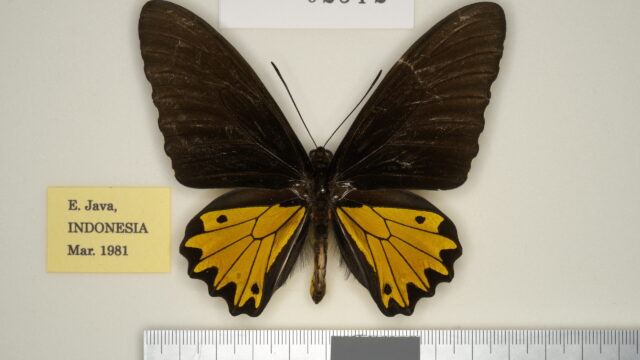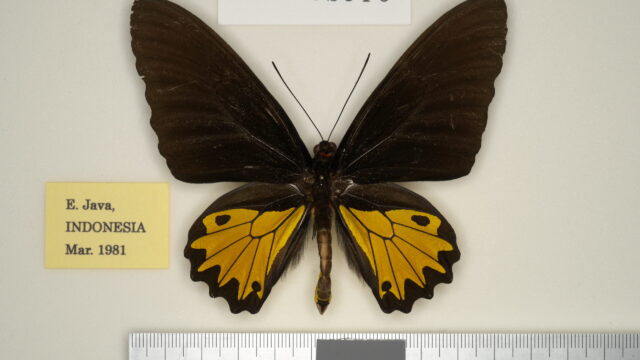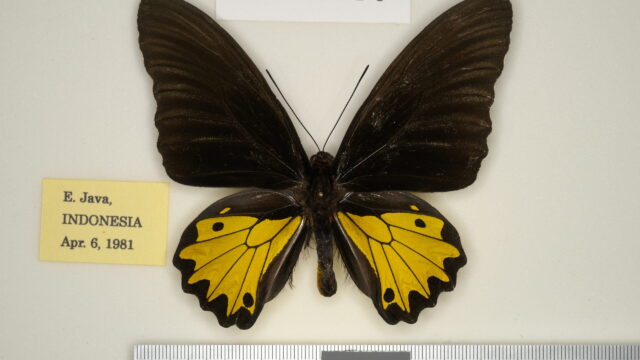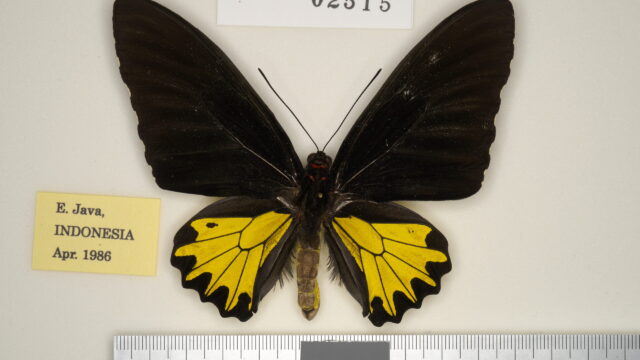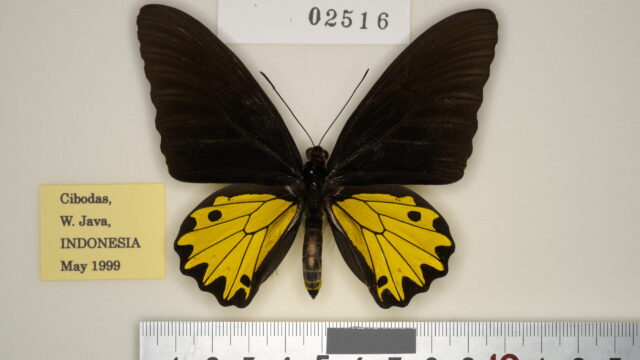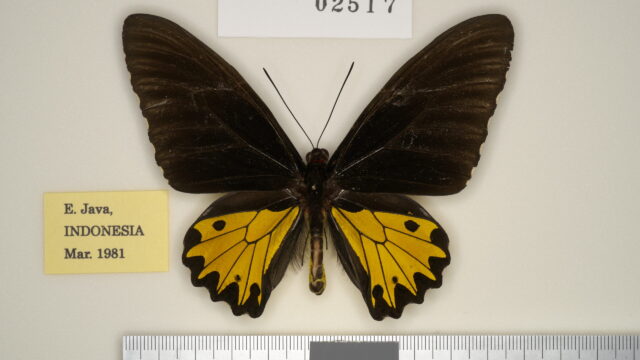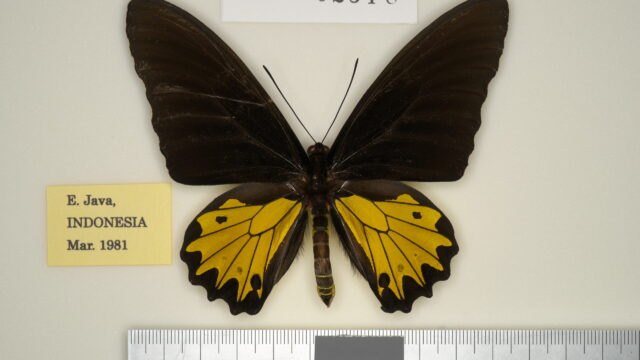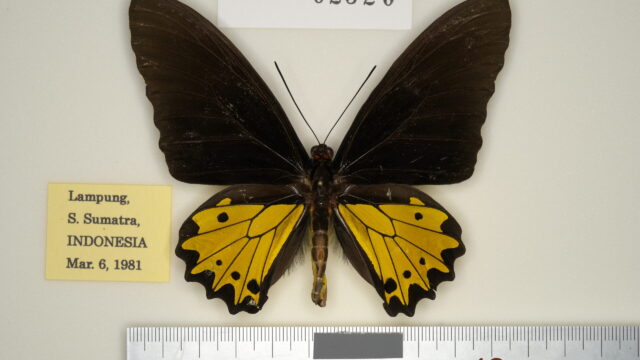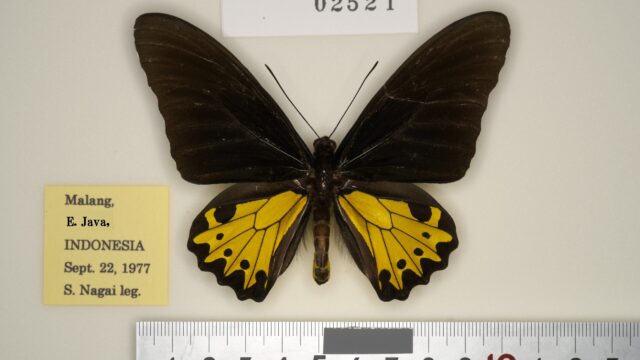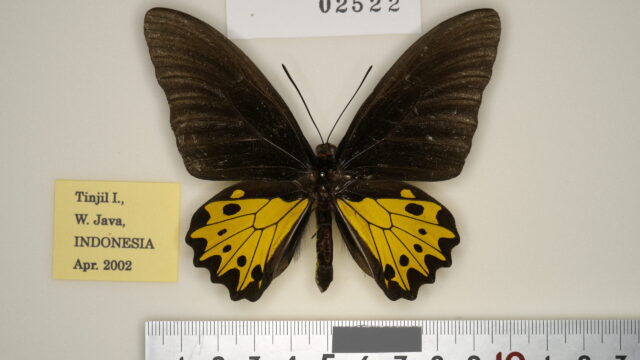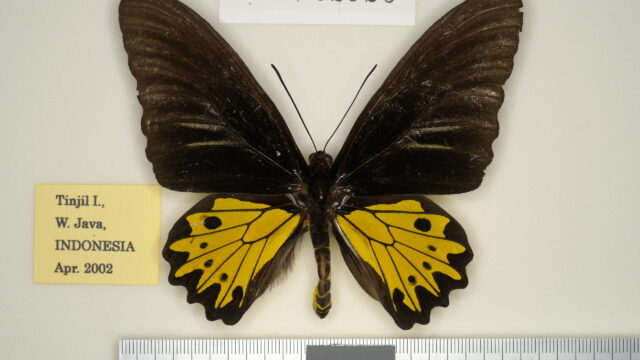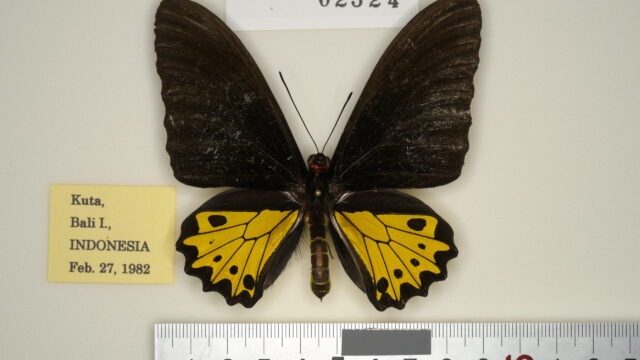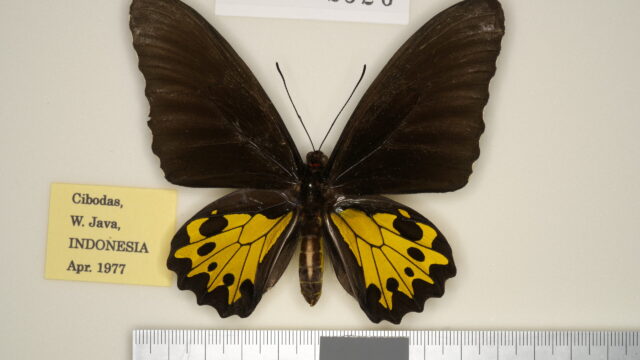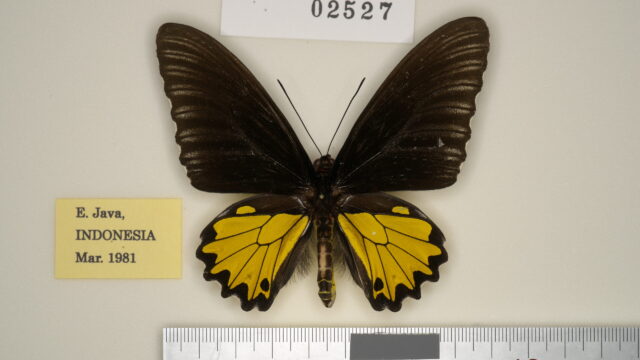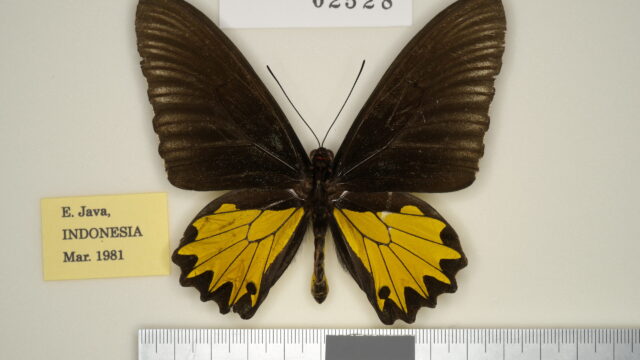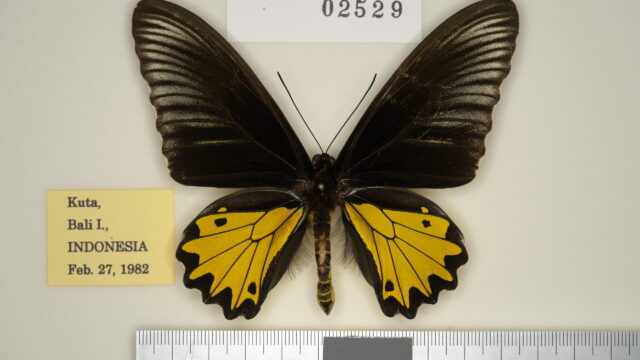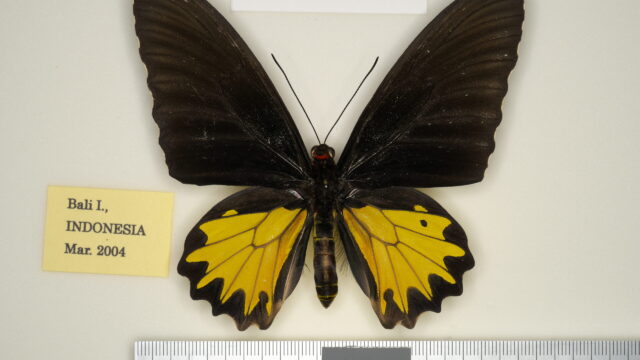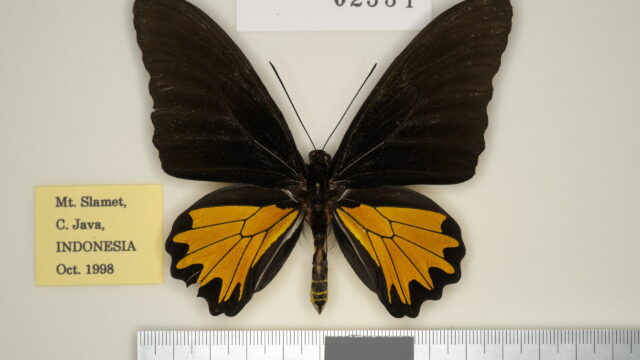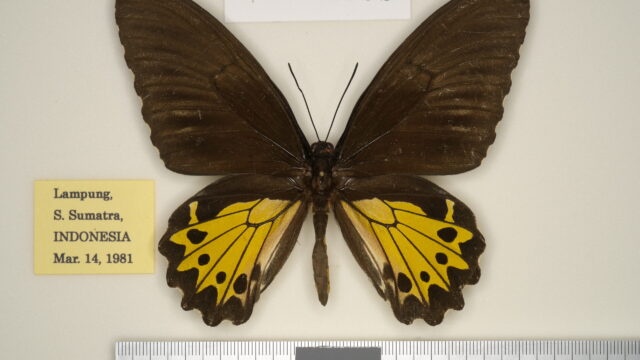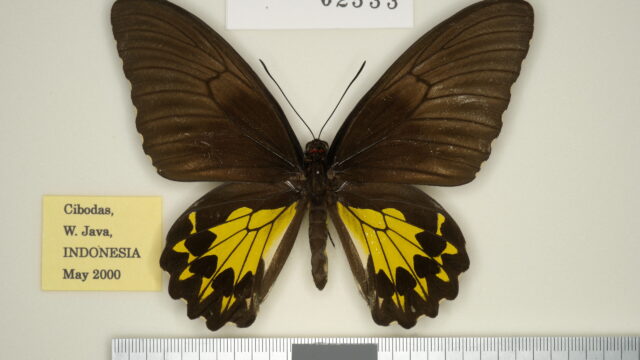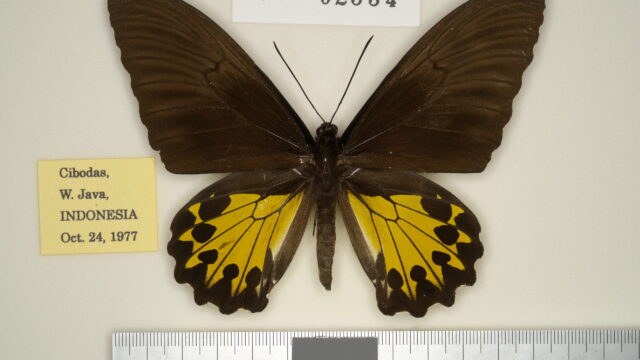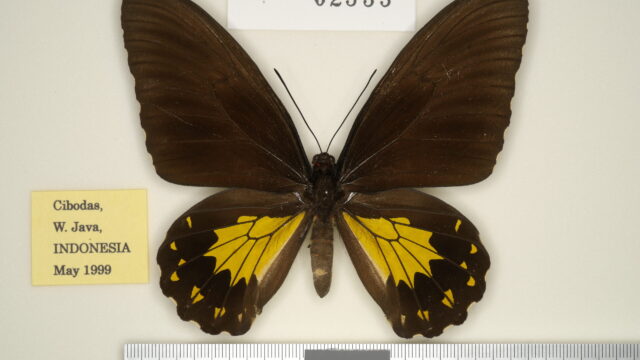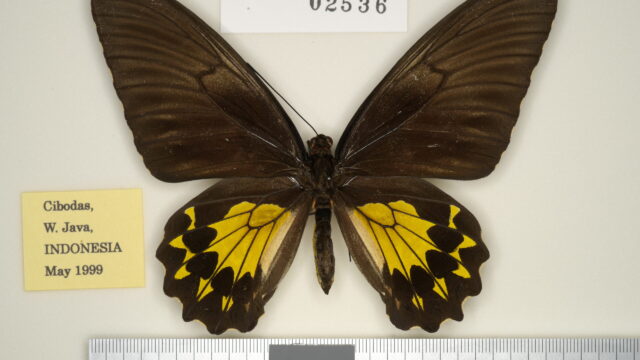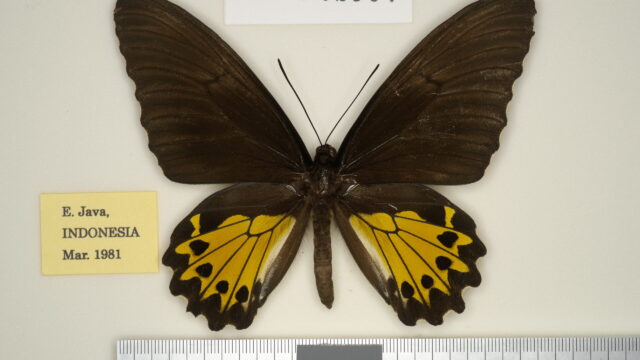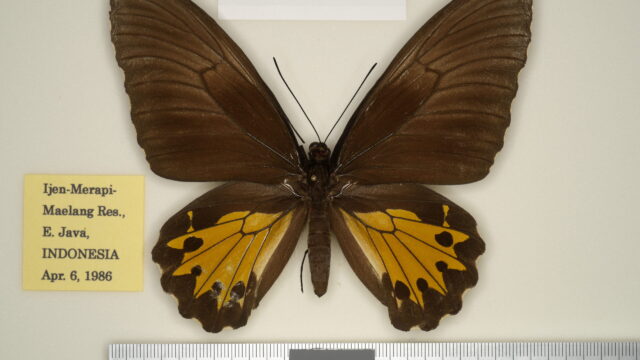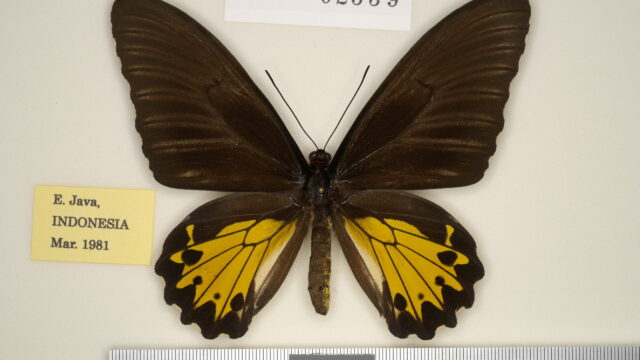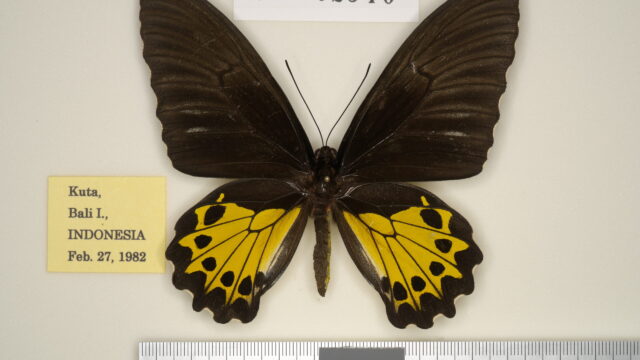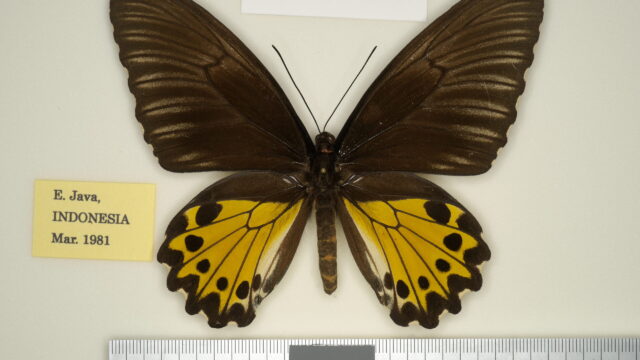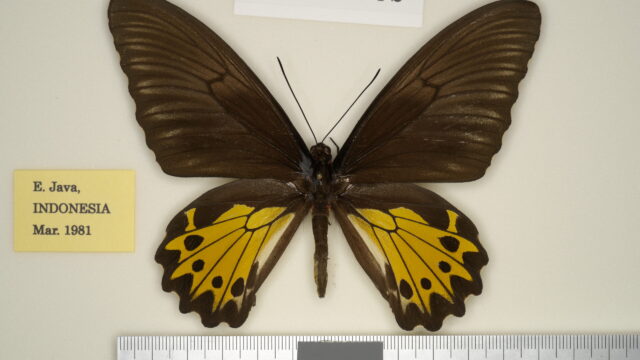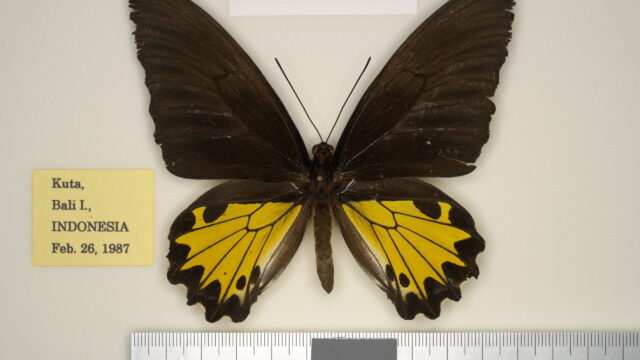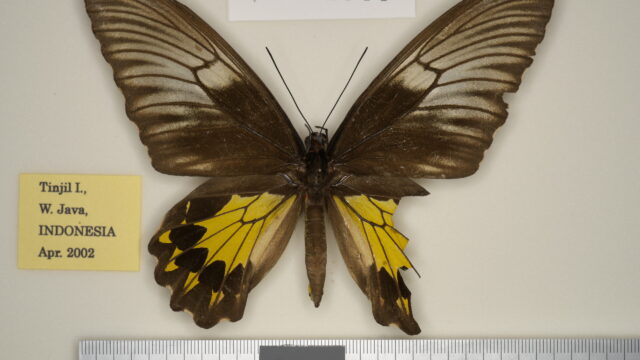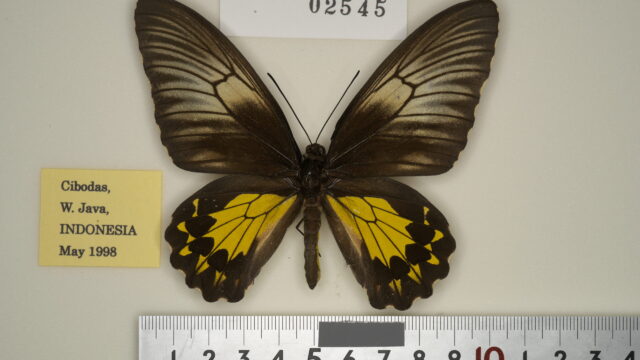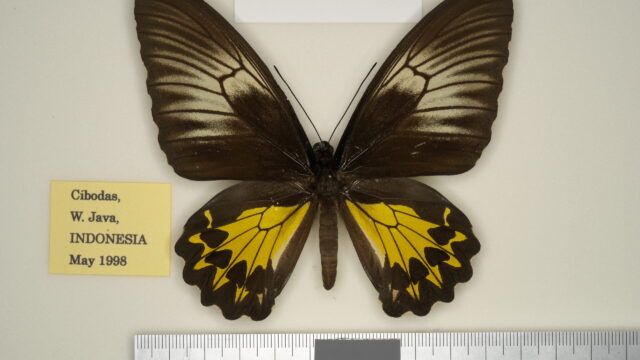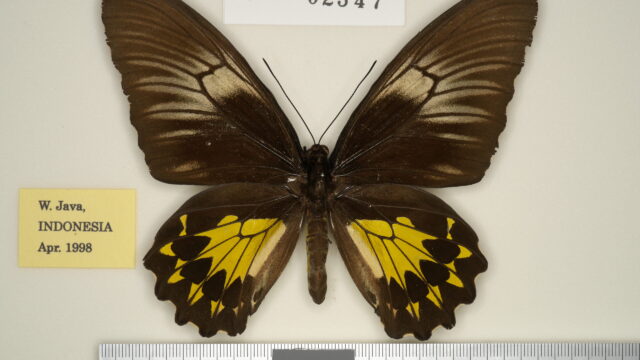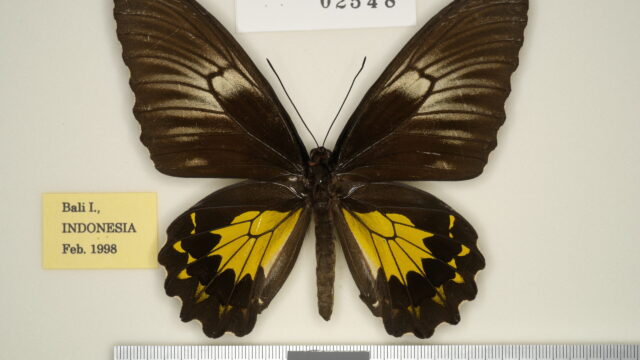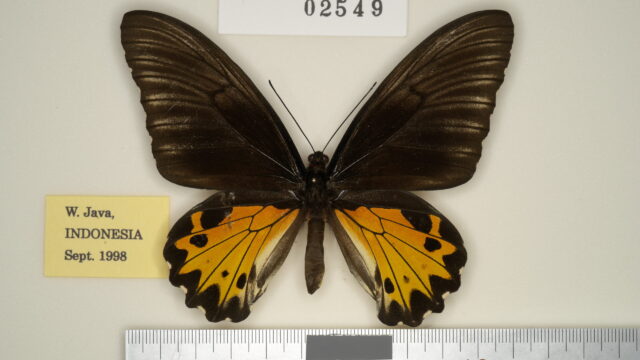- Ssp. helena (Linnaeus, 1758)19) [♂] [♀: pompeus (Cramer, 1775)1)] (♀: 2 forms)
= pompeus (Cramer, 1775)1) [♀] (Java)
= astenous (Fabricius, 1775)6) [♀] (Capte Bonae Spei (sic))
= heliacon (Fabricius, 1793)7) [♂] (E. India (sic))
= mannus Fruhstorfer, 190811) [♂, ♀] (Bali Is.)
INDONESIA (Sumatra) [Lampung] Krui, Mt. Rajabasa, Sebesi Is., Krakatau (=Rakata) Is., (Java) [W. Java] Sangiang Is., Tinjil Is., Mt. Salak, Bogor, Mt. Gede-Pangrango Nat. Park (Mt. Mas, Cibodas, Mt. Pangrango, Mt. Gede), Sukabumi, Garut, [C. Java] Mt. Slamet, Dieng Plateau, Genuk, Mt. Muria, [Yogyakarta] Yogyakarta, [E. Java] Popoh, Surabaya, Mt. Arjuna, Lawang, Malang, Mt. Bromo, Madura Is., Ijen-Merapi-Maelang Reserve, Banyuwangi, [Bali] Bali Is.
(Episodes of discovery and original description)
This subspecies was first described in 1719 for ♂ illustrated by Merian, which was the basis for the original description by Linnaeus (1758). The first description of the ♀ was astenous by Fabricius (1775) based on a specimen in Banks’ collection, which Cramer named pompeus in the same year. Later, Fabricius (1793) named it heliacon, also based on a specimen of Banks’ ♂. Rothschild (1895) unified the names of the two species. The species name helena is a reference to Helena, daughter of the great god Jupiter and Leda, wife of Menelaus, king of Sparta.
(Characteristics)
The earliest known species of butterflies, not only of Birdwing Butterflies. This subspecies is not only Java Is., but also found in southern region of Sumatra Is., so it is interesting in its habitat segregation with ssp. typhaon. This is smaller, and its wings are wider and more round than other subspecies. Both sexes have highly variable spotted pattern.
(Spotted pattern)
♂: Vein-Stripes of FW are usually absent but appear slightly in some individuals. The extent of semi-translucent golden patches on HW also varies among individuals, but generally one on the subcostal space are absent or minute. Many individuals also have black discal spots, but the number and size of these spots vary depending on specimens.
♀:2 forms. The subcostal yellow patch on HW is absent or minute. Sometimes, the yellow patch on the discal space 6 also diminished. Dark discal spots vary among individuals but are generally small and solitary.
- Dark form (♀-f. penetia (Jordan, 1908)18)): FW without vein-stripes.
- Light form (♀-f. pompeus (Cramer, 1775)1)): FW with vein-stripes.
(Variation)
♂-f. albovittata (Roepke, 1935)28) (=alboradians (Rousseau-Decelle, 1946)31)): [Aberrant FW pattern] White Vein-stripes are clearly present.
♂-f. neocarolus Haugum & Low, 198514): [Aberrant FW pattern] FW upper side with or without broad white stripes concentrating in the submarginal-marginal area; On underside with a prominent whitish-gray stripes on the marginal area. (Note: T. oblongomaculata papuensis f. carolus.)
♂-f. jupiter (Oberthür, 1879)22): [Aberrant HW pattern] HW without black discal spot.
♂-f. helena (Linnaeus, 1758)19): [Aberrant HW patten] Black discal spots in spaces 2 and 6.
♂-f. punctata (Dufrane, 1946)5): [Aberrant HW pattern] Absence the golden patch in subcostal space, large black discal spots in spaces 6, and minute one in space 3.
♂-f. intermedia (Dufrane, 1946)5): [Aberrant HW pattern] Small black discal spots in spaces 3 and 4.
♂-f. seriepunctata (Roepke, 1935)28): [ Aberrant HW pattern] The presence of black discal spots of approximately the same size in all discal spaces.
♂-f. noirae Rumbucher & Schäffler, 200532): [Aberrant HW pattern] The golden patches on HW reduced, subcostal space and space 6 are entirely black, and the cell and space 1 are almost black.
♂-f. rutilans (Oberthür, 1879)22): [HW discoloration] The color of golden patches of HW is reddish yellowish brown.
♂-f. holzi (Pagenstecher, 1890)25): [HW discoloration] The color of golden patches of HW is red or reddish brown.
♂-f. quadriga Rumbucher & Schäffler, 200532): [HW discoloration] The color of golden patches of HW have four colors (black, white, yellowish, and red).
♀-f. hycetus (Rippon, 1906)27) (=albicans (Roepke, 1935)28)): [Aberrant FW pattern] Polar form of light form with highly developed white vein-stripes.
♀-f. pseudodarsius Rumbucher & Schäffler, 200532): [Aberrant FW pattern] Resembles T. darsius, 1/3 cell-apex almost completely covered with white spots, but vein-stripes not as well developed as in f. hycetus.
♀-f. jupiter (Oberthür, 1879)22): [Aberrant HW pattern] HW without dark discal spot.
♀-f. fuliginosa (Rousseau-Decelle, 1946) 31): [FW/HW discoloration] All spots reddish brown in color.
♀-f. brutus Rumbucher & Schäffler, 200532): [FW discoloration] The color of vein-stripes of FW is brownish.
♀-f. rutilans (Oberthür, 1879)22): [HW discoloration] The color of pale band is reddish yellowish brown.
♀-f. pluto (Felder, 1865)8): [HW discoloration] The subcostal patch becoming copper-red-yellow toward the anterior margin.
